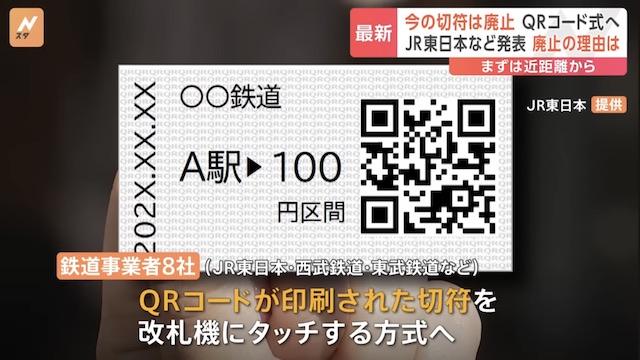TOKYO, May 30 (News On Japan) - Eight railway companies, including JR East, have announced that they will gradually phase out the current tickets in favor of QR codes starting from 2026.

JR East, Seibu Railway, Tobu Railway, and five other railway operators will replace the current magnetic tickets, which have a black back, with QR code-printed tickets that passengers can scan at ticket gates starting in 2026.
At JR East, long-distance tickets such as those for Shinkansen and limited express trains will not be included initially. The switch will first apply to short-distance tickets.
Currently, the tickets in use contain metals, which pose environmental challenges when recycling.
Switching to QR codes is expected to be more environmentally friendly and will eliminate issues such as tickets getting stuck in automatic ticket gates, which causes inconvenience to passengers.
Some Lines Already Using QR Code Tickets; Tokyu Corporation Allows Travel with Credit Cards
Takahiro Inoue, a broadcaster, reported that according to a Tobu Railway representative, 'The internal mechanisms of automatic ticket gates are very complex, and recovering tickets when they get stuck is quite challenging. Switching to QR codes will reduce maintenance costs.'
Okinawa Urban Monorail's Yui Rail introduced QR code tickets in October 2014.
While magnetic tickets are considered industrial waste, QR code tickets can be disposed of as regular waste.
Additionally, from May 15, Tokyu Corporation has enabled passengers to travel using touch payment-enabled credit and debit cards (excluding the Tokyu Setagaya Line).
Source: TBS














